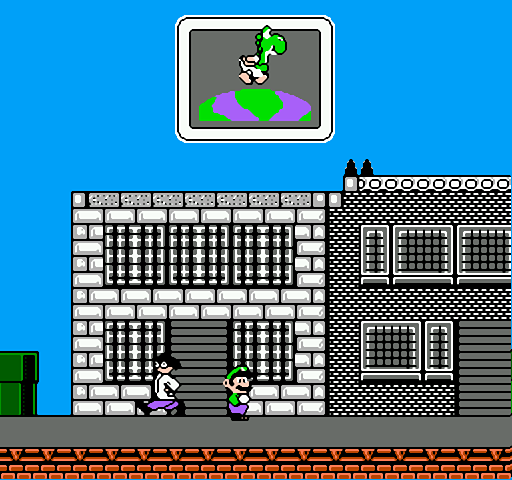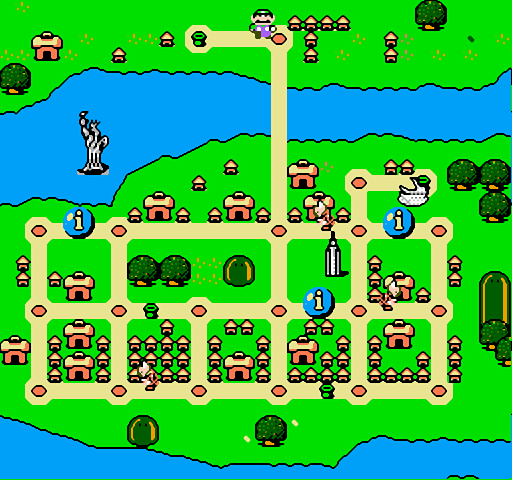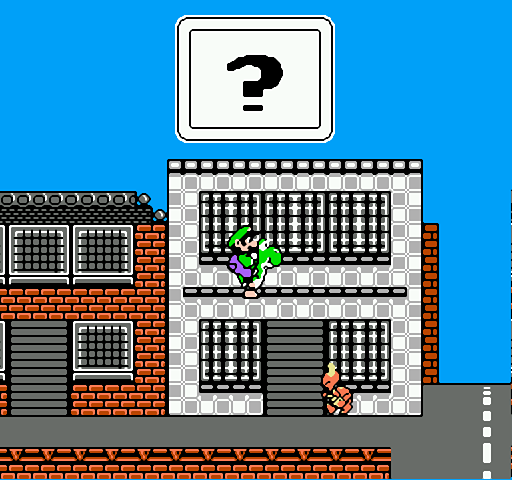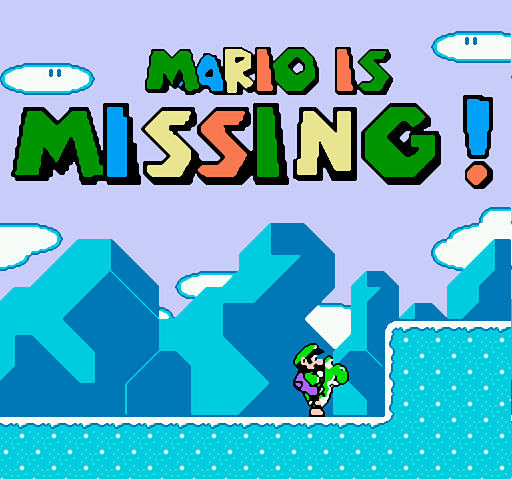
Mario Is Missing! (1993-)
Developer: Radical Entertainment
Publisher: The Software Toolworks | Mindscape
Genre: Educational
Mario Is Missing! for the NES was developed by Radical Entertainment and released in 1993, with The Software Toolworks publishing it in North America and Mindscape handling publication in other regions. The game was also released on MS-DOS, SNES, and Macintosh, expanding its reach beyond the NES. Unlike traditional Mario platformers, Mario Is Missing! focused on educational content, combining exploration and problem-solving with geography-based challenges. This title marked a notable departure from the high-action platforming style that defined most Mario games.
The story follows Luigi as he sets out to rescue his brother Mario, who has been kidnapped by Bowser. Players travel to cities and countries around the world, recovering stolen treasures and returning them to their proper locations. Inspired by the educational game trend of the early 1990s, Mario Is Missing! blends adventure mechanics with learning objectives, making geography and history central to its gameplay. The game’s setting emphasizes real-world locations and cultural landmarks, providing players with an interactive method to learn about the world.
Gameplay centers on exploring maps, speaking with non-playable characters, and answering questions to determine the correct location for each stolen item. Players must navigate urban and regional maps, retrieve treasures from Bowser’s minions, and correctly return them to advance. The NES version simplified some visual elements compared to the computer releases but retained the educational focus and interactive mechanics. The soundtrack features light, upbeat music that accompanies exploration, puzzle-solving, and item collection, creating an engaging and approachable experience for younger players.
Mario Is Missing! does not have a prequel but was followed by Mario’s Time Machine, which continued the educational adventure format with historical themes. Promotion emphasized its educational benefits, family-friendly content, and connection to the iconic Mario franchise, appealing to parents and young gamers alike. Reception was mixed, with appreciation for its learning elements and unique approach but disappointment from traditional Mario fans expecting platforming action. Despite this, Mario Is Missing! remains a notable example of an educational spin-off within the Mario franchise, remembered for its unusual blend of adventure and instruction.
Images from MobyGames
Buy Mario Is Missing!
Click one of the Ebay or Amazon buttons below to check the latest prices and purchase Mario Is Missing! for the Nintendo Entertainment System.

Related Searches
Mario Is Missing! NES Download
Mario Is Missing! is available to purchase and download from a range of vendors. Always shop around...
Mario Is Missing! NES Manual
Various repositories around the internet have scanned and archived a range of retro manuals. Search now to.....
Mario Is Missing! NES Rom
We don't host or link to rom sites for this game. However, there are many sites out there that may be...
Mario Is Missing! NES Walkthrough
Many sites - particularly YouTube - host a range of walkthrough videos to guide you in your quest to get...
Mario Is Missing! NES Cheats
There are various sites out there that can offer cheat codes for games. Search now to find all available...
Mario Is Missing! NES Controls
This information can often be obtained through the user manual. Alternatively there are many sites out there...
Mario Is Missing! NES Release Date
The initial release date for Mario Is Missing! is stated as June 1993. Other ports of the game may..
Mario Is Missing! NES Review
There are many sites out there that have collated and documented historic reviews of this game. Search now...
Mario Is Missing! Famicom
As a Nintendo Entertainment System release, this game was also likely also available on the Famicom. This....
Mario Is Missing! NES Speedrun
There is now a community of competitive speedrunners who will try and gain the fastest possible time on their....








